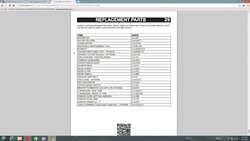After years of running our stove (specs in signature) the fake brick panels it came with have broken and aren't usable. New ones are absurdly expensive.
This year and last it seems like we've had to bump the stove up to a higher setting to keep the house at 72deg. Obviously, these past two winters have been cold but we're noticing that it's just not putting out as much heat. I keep the stove very clean and have replaced pretty much every mechanical part so it's practically new.
I was wondering if the panels affect how much heat the stove puts out or if there is something else I should be looking at.
This year and last it seems like we've had to bump the stove up to a higher setting to keep the house at 72deg. Obviously, these past two winters have been cold but we're noticing that it's just not putting out as much heat. I keep the stove very clean and have replaced pretty much every mechanical part so it's practically new.
I was wondering if the panels affect how much heat the stove puts out or if there is something else I should be looking at.




